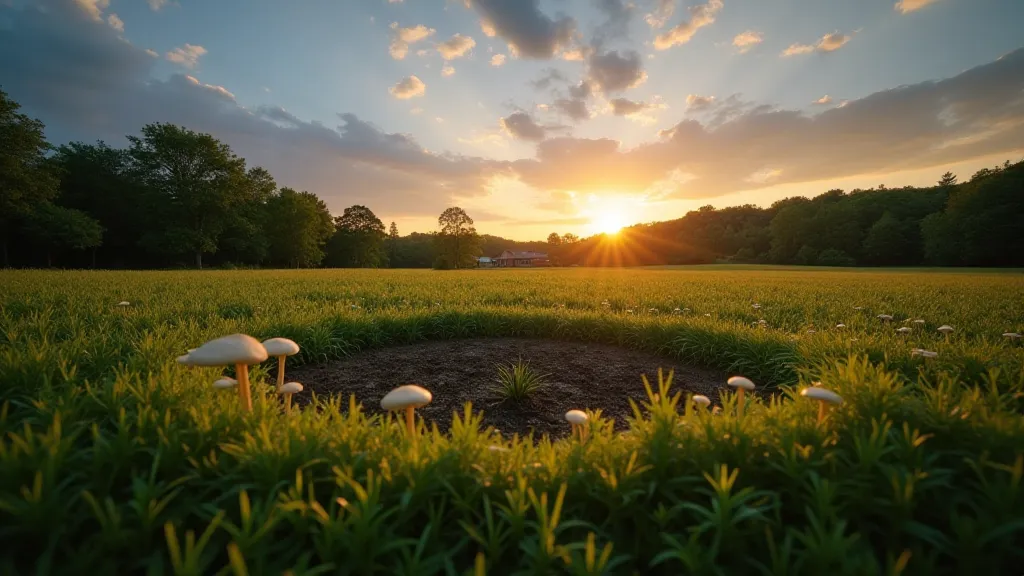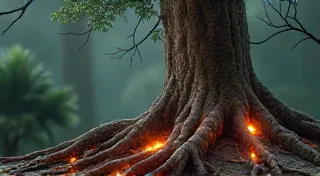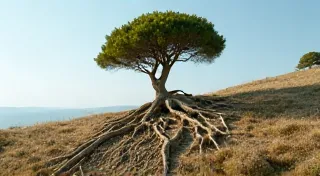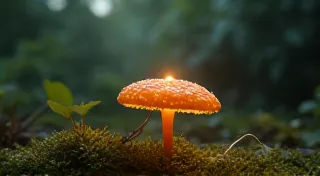Chromatic Whispers: Fairy Rings and Seasonal Shifts
The scent of damp earth and decaying leaves, the sudden appearance of a circle of crimson or gold, a whisper of music carried on the breeze… Fairy rings. They evoke a primal sense of wonder, a feeling of stepping into a space not wholly belonging to our world. For centuries, across countless cultures, these remarkable formations—circular patches of mushrooms growing in a ring – have been more than just a botanical phenomenon. They're vibrant nodes of folklore, intricately woven into the seasonal cycles and agricultural beliefs of those who dwell near them. This archive explores that connection, revealing how the changing face of the land shapes the legends that swirl around these enigmatic circles.
My own fascination began with my grandfather, a melancholic accordionist who spent his days mending fences and tending a small orchard on the edge of the Devon countryside. He’s the one who first pointed out a fairy ring to me, a perfect circle of Amanita muscaria glowing like embers in the twilight. "They dance there, you know," he’s always murmured, his fingers fiddling with the worn bellows of his instrument. He never elaborated, but that simple statement imprinted itself on my young mind, forever linking the fairy rings to a feeling of haunting, forgotten music – a music that seemed to breathe with the land itself.

The Agricultural Heart of the Folklore
Across Europe, and beyond, the importance of agriculture fundamentally shaped the perception of fairy rings. In many agrarian societies, the success of the harvest was paramount. A bountiful crop meant survival; failure brought hardship and potential famine. Consequently, natural phenomena – especially those that seemed capricious or unpredictable – were often interpreted as messages from the unseen world. Fairy rings, with their abrupt appearance and sometimes detrimental effects on grazing land (discoloration, temporary sterility), were particularly ripe for interpretation.
In parts of Ireland, a fairy ring was often considered a "fairy fort" or a gateway to the Otherworld, actively avoided by farmers. Stepping within the ring was believed to incur the wrath of the fairies, leading to bad luck, sickness, or even being spirited away. Conversely, in some regions of Germany, fairy rings were seen as places of blessing – if treated with respect. Leaving offerings of milk and bread was a common practice to appease the spirits and ensure a good harvest. The difference highlights a core tenet of folklore: belief isn’t monolithic; it's shaped by local conditions, historical experiences, and the specific anxieties of the community.
Seasonal Rhythms and the Ring's Appearance
The time of year when a fairy ring is most visible is crucial to its folklore. The dampness of autumn and spring creates the ideal conditions for fungal growth, and the rings often appear most dramatically after periods of heavy rain. This temporal connection reinforces the link between fairy rings and seasonal cycles.
In the Slavic tradition, the appearance of fairy rings in spring was associated with the awakening of the earth spirits. These spirits were often depicted as mischievous but ultimately benevolent, responsible for the fertility of the land. The rings served as visible reminders of their presence. Conversely, in some parts of Scandinavia, the rings appearing during the harvest season were viewed with suspicion, seen as harbingers of a harsh winter or a lean year to come. The colours of the mushrooms themselves were significant. The bright red caps of Amanita muscaria, often found in fairy rings, evoked notions of danger and mystery, reinforcing their association with the Otherworld.
The link between mushroom folklore and seasonal beliefs extends beyond simply their appearance. Mushrooms, as fungi, are decomposers, playing a vital role in the breakdown of organic matter. This cyclical process of decay and renewal deeply resonated with agrarian cultures, where life and death were intrinsically linked to the rhythms of the land. The ephemeral nature of mushrooms – their sudden appearance and swift disappearance – mirrored the impermanence of life itself.
Craftsmanship and the Accordion's Echo
Thinking about fairy rings invariably brings my grandfather's accordion to mind. Like the rings themselves, it was a product of careful craftsmanship, a testament to the skill of the maker. The bellows, painstakingly folded and glued, represented a meticulous process, a dedication to detail. Each key held a tone, a subtle nuance, capable of evoking a range of emotions. I remember watching him carefully clean and oil the leather of the bellows, a ritual performed with the same reverence he displayed when discussing the fairy rings.

He’s long gone now, but I inherited the accordion. Its sound is slightly off now, the bellows a little stiff, but the echoes of his music still linger within its frame. Restoring it is a delicate process, requiring a deep understanding of the instrument’s mechanics and a respect for its history. It’s not simply about replacing worn parts; it’s about preserving the spirit of the instrument, the essence of the craftsman’s artistry.
Similarly, understanding fairy ring folklore requires more than just a superficial examination of the beliefs. It demands an appreciation for the historical context, the agricultural practices, and the anxieties of the communities that shaped these legends. It's about recognizing the connection between the natural world and the human imagination, the way in which we project our hopes and fears onto the mysterious phenomena that surround us.
Beyond the Ring: A Legacy of Wonder
The folklore of fairy rings is not merely a collection of quaint superstitions. It's a window into a different way of understanding the world, a time when humans were more intimately connected to the rhythms of nature. It reminds us that the landscape is not just a passive backdrop to our lives; it's a living, breathing entity, imbued with meaning and mystery. The appearance of a fairy ring remains a moment of enchantment, a fleeting glimpse into a realm where the veil between worlds is thin.
And like the enduring craftsmanship of my grandfather's accordion – an instrument that continues to resonate with the echoes of the past – these legends persist, offering a timeless reminder of the power of imagination and the enduring allure of the natural world. The chromatic whispers of the fairy ring continue to dance, carried on the wind, a testament to the enduring power of folklore and the magic that lies hidden within the land.






